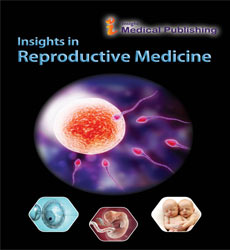Contraception and Anticonception of Birth Control and Fertility Control
Sara Daniel*
Department of Obstetrics, Gynaecology and Reproductive Sciences, University of California, San Francisco, USA
- *Corresponding Author:
- Sara Daniel
Department of Obstetrics
Gynaecology and Reproductive Sciences
University of California, San Francisco, USA
E-mail: daniel-s@ughl.edu
Received Date: September 16, 2021; Accepted Date: October 1, 2021; Published Date: October 8, 2021
Citation: Daniel S (2021) Contraception and Anticonception of Birth Control and Fertility Control. Insights in Reproductive Medicine Vol.5 No.1:e006.
Description
Birth control is also known as contraception, anticonception, and fertility control. Birth control may be a method or device won’t to prevent pregnancy. Birth control has been used since past, but effective and safe methods of contraception only became available within the 20th century. Birth control is any method wont to prevent pregnancy. There are many different methods of birth control including condoms, IUDs, the rhythm method, tubal ligation, birth control pills, and vasectomy. Types of hormonal birth control include pills, implants, skin patch, vaginal ring, progestin injections. Birth control pills may contain both estrogen and progestin, or only progestin. Implants are small rods implanted beneath the skin and they release a continuous dose of hormone to prevent ovulation. Progestin injections, like Depo-Provera, that are given into the muscles of the upper arm or buttocks once every 3 months. Skin patch, such as Ortho Evra, is placed on your buttocks, shoulder or other place on the body. It releases a continuous dose of hormones. The vaginal ring, like nuvaring, may be a flexible ring about 2 inches 5 centimetres wide and it's placed into the vagina and releases the hormones of progestin and estrogen.
Permanent methods of Birth Control these methods are best for men, women, and couples who do not want to have children in the future. They include vasectomy and tubal ligation. These procedures can sometimes be reversed if a pregnancy is desired at a later time. However, the success rate for reversal isn't high. Birth control methods that don't work alright. Withdrawal of the penis from the vagina before ejaculation can still result in pregnancy and some semen often escapes before full withdrawal and it can be enough to cause a pregnancy. Despite the myths, women who are breastfeeding also can become a pregnant. Birth control can help people to make a decision once they want to possess children and there are differing types of barriers and medications. Barrier methods of contraception prevent sperm from entering the uterus. These methods are only used during sexual intercourse and should be used correctly every time two people have sex and the methods are diaphragm, cervical cap, Spermicides, Male and female condoms, The sponge ,para gard, sterilization, withdrawal method.
Birth control pills affect a person’s hormone levels and it may lead to various side effects. In the us , around 12.6%trusted Source of females aged 15–49 years takes pill pills and these are safe for many females to use. A person should concern a healthcare provider if following symptoms occur like severe abdominal pain, headaches, chest pain, shortness of breath, eye problems like blurred vision or a loss of vision, swelling or aching within the legs and thighs. Some common side effects of oral contraceptives are spotting between periods, nausea, breast tenderness, headaches and migraine, weight gain, mood changes, missed periods, decreased libido, vaginal discharge, eye changes. The pill is safe for most females to use and the pill may not trusted source people who smoke and are over the age of 35 years, heart diseases, migraine, breast cancer, endometrial cancer.
Open Access Journals
- Aquaculture & Veterinary Science
- Chemistry & Chemical Sciences
- Clinical Sciences
- Engineering
- General Science
- Genetics & Molecular Biology
- Health Care & Nursing
- Immunology & Microbiology
- Materials Science
- Mathematics & Physics
- Medical Sciences
- Neurology & Psychiatry
- Oncology & Cancer Science
- Pharmaceutical Sciences
